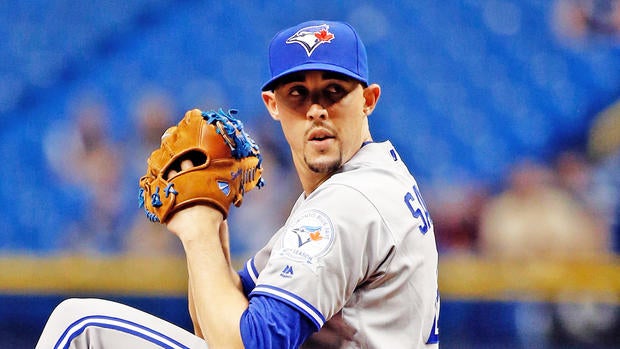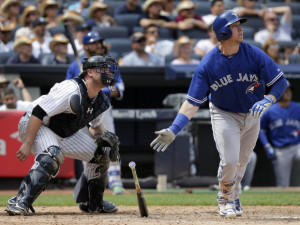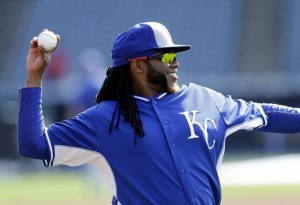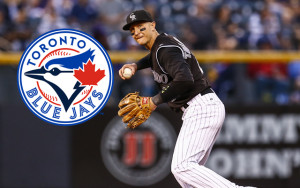
Toronto Blue Jays pitcher Aaron Sanchez is one of the best young pitchers in baseball. In his first full season in the league, Sanchez sits at 11-1 and atop the American League in ERA (2.71). At just 24 years old, Sanchez could be one of the best pitchers in the game for many years to come. But, like many other things in baseball, there’s one catch:
Aaron Sanchez has never pitched this many innings in a season in his professional career.
His previous career high in innings pitched was 2014, a season that saw Sanchez toss 133.1 innings between AA New Hampshire, AAA Buffalo, and Toronto. This season, he’s already up to 139.1 innings, all of which came in starts. Sanchez had previously been shuffled back and forth between the starting rotation and this helped him limit his innings in the past couple of seasons. 2016, however, is his first full season as a starting pitcher, and even though he has performed extraordinarily well, many observers assumed that Sanchez would, at some point, either: 1) move to the bullpen or 2) be shut down by the organization completely. While Sanchez does not have a set “innings limit”, the Blue Jays and manager John Gibbons frequently discussed moving him to the bullpen at some point later in the season.
But that’s not the decision the Blue Jays decided to make. Instead of shutting down Sanchez completely or moving him to the bullpen to conserve his innings, the team announced Thursday that Sanchez would remain in the starting rotation through the rest of the season. While the Jays will go with a six-man rotation and closely monitor Sanchez for signs of fatigue, the decision marks a clear change of course for a franchise that seemed to want to protect Sanchez’s young arm even if the team had a chance to go to the playoffs. So, here comes the big question: is this the right decision for Sanchez and the Blue Jays?
First, to explain Toronto’s logic in making this decision, we need to examine the infamous “Strasburg Shutdown” of 2012. In that situation, Nationals pitcher Stephen Strasburg, who was fresh off Tommy John Surgery that forced him to miss the 2011 season, was approaching his team-imposed limit of 160 innings. Sure enough, Strasburg reached 159.1 innings with his start on September 5th of that season. After that start, the team informed Strasburg that he would not pitch again for the rest of the year, even as the team closed in on the franchise’s first playoff berth since 1981; the team was known as the Montreal Expos back then.
The Nationals took the NL East crown, and after winning 98 games, the team was widely considered a World Series favorite even without Strasburg’s services. However, Washington would get all it could handle against the St. Louis Cardinals in a series that went the distance. In Game 5, St. Louis rallied from a 6-0 deficit to win 9-7 and advance to the NLCS. Because Strasburg was not available for that series, the Nats were forced to start Edwin Jackson in a pivotal Game 3. Jackson struggled, allowing four runs in five innings; the Cardinals would win that game and take a 2-1 series lead. While nothing would have been assured if Strasburg had started the game, it is natural and fair to wonder if the Nationals would have won the series if Strasburg was available. He wasn’t, and the Nationals possibly blew their chance at a World Series because of their high-wire act centered around protecting their young star.
That’s the mistake the Blue Jays are trying to avoid. The problem is that overworking Sanchez is probably a mistake, as well. Just ask the New York Mets.
The Mets had the incredible, almost too-good-to-be-true luck of having four superstar pitchers (Steven Matz, Noah Syndergaard, Jacob deGrom, Matt Harvey) in the same rotation at the same time a year ago. The team was in a very similar position as the Nationals were in 2012, closing in on a playoff berth while trying to protect its star pitcher(s). Near the end of last season, the Mets were primarily concerned with protecting Harvey, who, just like Strasburg, was coming off Tommy John Surgery the year before.
Instead of going the way of the Nationals, the Mets decided to keep Harvey and the other young guns in a six-man rotation for the month of September. Harvey agreed to continue pitching, even after a protracted fight with the front office waged through the media. Unlike the Nationals, the Mets reached the World Series, eventually losing to the Kansas City Royals in five games. The wear and tear of the postseason took its toll on the Mets’ pitchers, though; Harvey, Syndergaard, and deGrom all threw well over 200 innings for the season (Syndergaard started the year in AAA). Matz avoided this distinction because of a lat injury he suffered in early July that cost him two months of the season.
The effects of being stretched out unexpectedly last season have made their presence felt on the Mets’ starters this season. Matz and Syndergaard have both pitched the second half of the season with bone spurs in their elbows while Harvey is out for the year after undergoing surgery for Thoracic Outlet Syndrome, an injury that has claimed the likes of Chris Carpenter, Chris Young, and Jaime Garcia. The Mets probably knew that the right decision would have been to limit the innings of their star pitchers, but with the team performing so well and the opportunity to win a championship firmly in their grasp, it was hard for the Mets to pull that trigger. But the team has a history of knowing what the right decision is and yet still making the wrong one; anyone remember Game 5 of the World Series?
This is the same position the Blue Jays find themselves in, but they only have one young pitcher to manage instead of four. The organization obviously thinks that going to a six-man rotation will help Sanchez and the rest of the rotation stay fresh for a potential playoff run. But as we saw with the Mets last season and now into this one, a six-man rotation is not a be-all, end-all cure for a young pitcher.
That’s why this decision is a mistake; while the Jays sit in a tie for first place in the AL East, the future of the franchise is much more important than just this season. It would be much better for the Jays to have a healthy and effective Aaron Sanchez for the next ten years instead of burning him out this year and having him never be the same again. It’s a difficult decision to make because the minds of many in the organization are clouded by the opportunity to win a championship this year. The decision becomes even more muddled when you consider that Sanchez is not coming off Tommy John Surgery or any other major operation (he’s never had Tommy John). But would the Blue Jays be willing to go down that road if wear and tear catch up to Sanchez at the end of this season?
There are a multitude of reasons why this could be considered both the right and the wrong decision. The one I keep coming back to is the fact that it’s just more important to have Sanchez healthy for the rest of his career rather than to burn him out going for a championship this year. Remember Stephen Strasburg? He’s one of the best pitchers in the league this year, sporting a 15-1 record and a 2.63 ERA. The Nationals are right back where they were four years ago, but this time there will be no limitations on Strasburg’s usage. The Nationals can go for a championship this season without the cloud of innings limits or the threat of major injury hanging over their heads.
That’s what could have awaited the Blue Jays if they made the smart decision with Sanchez. Unfortunately, it looks like they went in a very different direction, for better or worse.



